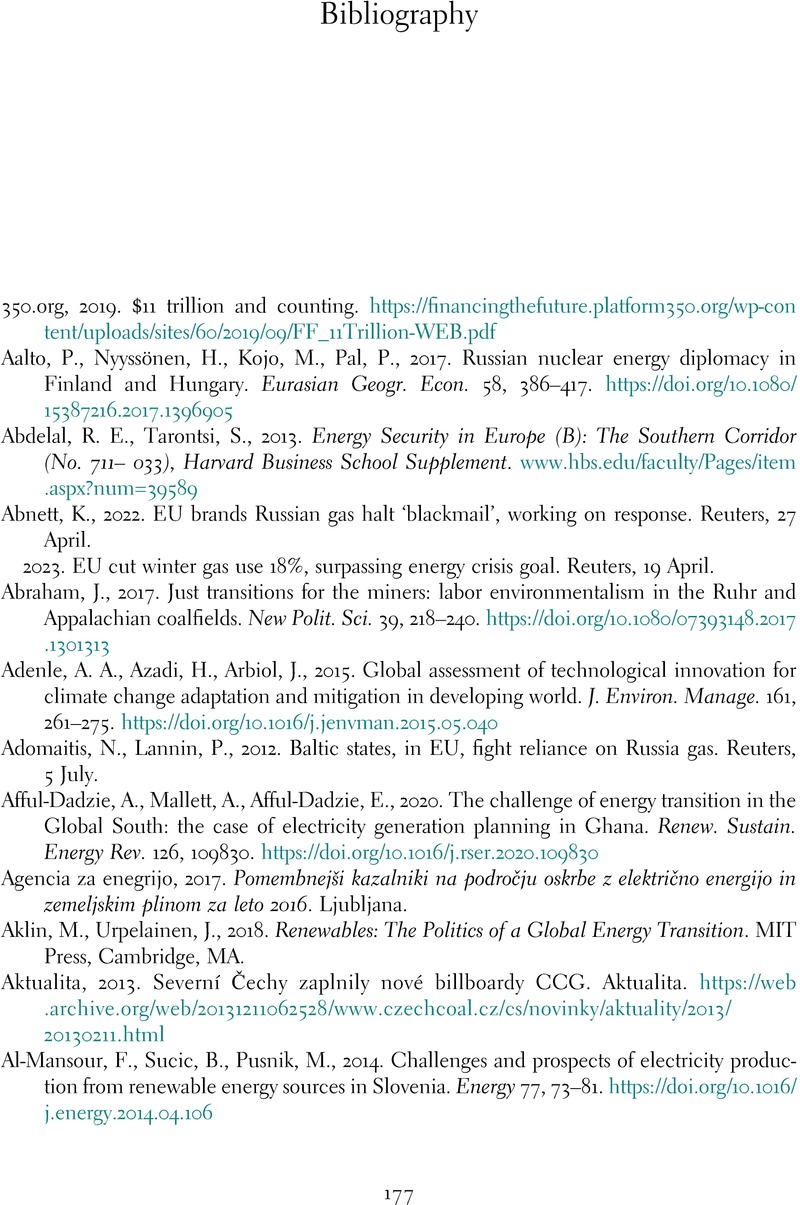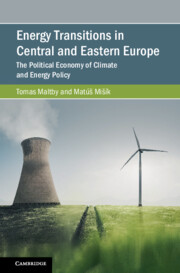Book contents
- Energy Transitions in Central and Eastern Europe
- Cambridge Studies on Environment, Energy and Natural Resources Governance
- Energy Transitions in Central and Eastern Europe
- Copyright page
- Dedication
- Contents
- Figures
- Tables
- Preface
- Acknowledgements
- Abbreviations
- Introduction
- 1 The Development of Energy and Climate Policy in the EU and CEE
- 2 A Conceptual Framework for Understanding Energy Transitions
- 3 Energy Governance
- 4 The Effect of Foreign Policy on Climate and Energy Policy
- 5 State-Society Relations
- 6 The Influence of CEE Countries on EU Climate and Energy Policy
- 7 The Global Context
- 8 Conclusion
- Bibliography
- Index
- References
Bibliography
Published online by Cambridge University Press: 19 April 2024
- Energy Transitions in Central and Eastern Europe
- Cambridge Studies on Environment, Energy and Natural Resources Governance
- Energy Transitions in Central and Eastern Europe
- Copyright page
- Dedication
- Contents
- Figures
- Tables
- Preface
- Acknowledgements
- Abbreviations
- Introduction
- 1 The Development of Energy and Climate Policy in the EU and CEE
- 2 A Conceptual Framework for Understanding Energy Transitions
- 3 Energy Governance
- 4 The Effect of Foreign Policy on Climate and Energy Policy
- 5 State-Society Relations
- 6 The Influence of CEE Countries on EU Climate and Energy Policy
- 7 The Global Context
- 8 Conclusion
- Bibliography
- Index
- References
Summary

- Type
- Chapter
- Information
- Energy Transitions in Central and Eastern EuropeThe Political Economy of Climate and Energy Policy, pp. 177 - 232Publisher: Cambridge University PressPrint publication year: 2024



